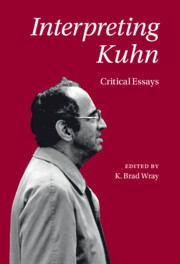Book contents
- Interpreting Kuhn
- Interpreting Kuhn
- Copyright page
- Dedication
- Contents
- Figures
- Contributors
- Acknowledgments
- Abbreviations
- Introduction
- Part I Foundational Issues
- Part II Three Core Concepts
- Part III Kuhnian Themes
- Chapter 8 The Copernican Revolution since Kuhn
- Chapter 9 Kuhn, the Duck, and the Rabbit – Perception, Theory-Ladenness, and Creativity in Science
- Chapter 10 Kuhn on Scientific Discovery as Endogenous
- Chapter 11 Truth, Incoherence, and the Evolution of Science
- Chapter 12 Reassessing Kuhn’s Theoretical Monism
- Bibliography
- Index
Chapter 9 - Kuhn, the Duck, and the Rabbit – Perception, Theory-Ladenness, and Creativity in Science
from Part III - Kuhnian Themes
Published online by Cambridge University Press: 25 June 2021
- Interpreting Kuhn
- Interpreting Kuhn
- Copyright page
- Dedication
- Contents
- Figures
- Contributors
- Acknowledgments
- Abbreviations
- Introduction
- Part I Foundational Issues
- Part II Three Core Concepts
- Part III Kuhnian Themes
- Chapter 8 The Copernican Revolution since Kuhn
- Chapter 9 Kuhn, the Duck, and the Rabbit – Perception, Theory-Ladenness, and Creativity in Science
- Chapter 10 Kuhn on Scientific Discovery as Endogenous
- Chapter 11 Truth, Incoherence, and the Evolution of Science
- Chapter 12 Reassessing Kuhn’s Theoretical Monism
- Bibliography
- Index
Summary
Kuhn used the duck–rabbit figure as a metaphor for revolutionary change in science. The two aspects of the drawing stand for two ways of perceiving the world, before and after a revolution, while the drawing itself represents the world that, paradoxically, both changes and remains the same. I argue that Kuhn, aiming to bring about a revolution in philosophy of science, did not want to eliminate the paradox, but rather to exploit and underscore it to challenge what he saw as the dominant epistemological paradigm. I also argue that Kuhn rejected the two-tiered view of perception, first observing and then interpreting raw data, in favour of the theory-ladenness of observation that echoed Wittgenstein’s account of ‘seeing’ rather than Hanson’s assimilation of scientific observation to ‘seeing as’. According to Wittgenstein, ‘seeing as’ is parasitic upon regular seeing and, in that sense, cannot illuminate the general case of perception in science. Finally, I show that the analogy between the dawning of an aspect and novelty in science, informed Kuhn’s views on creativity. In his view, advances in science emerge when a system of beliefs is transformed by new patterns of organization.
Keywords
- Type
- Chapter
- Information
- Interpreting KuhnCritical Essays, pp. 169 - 184Publisher: Cambridge University PressPrint publication year: 2021
- 2
- Cited by

